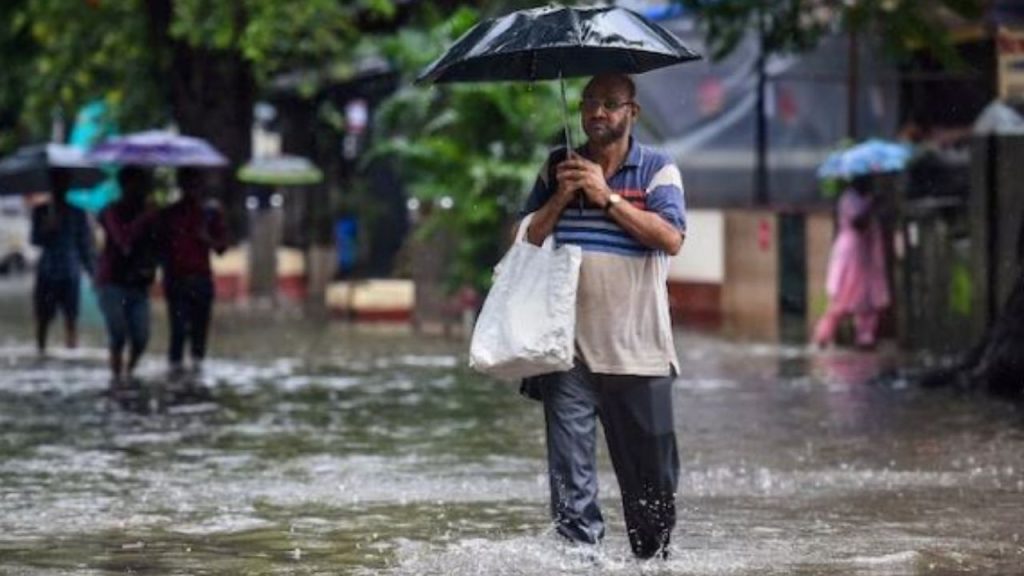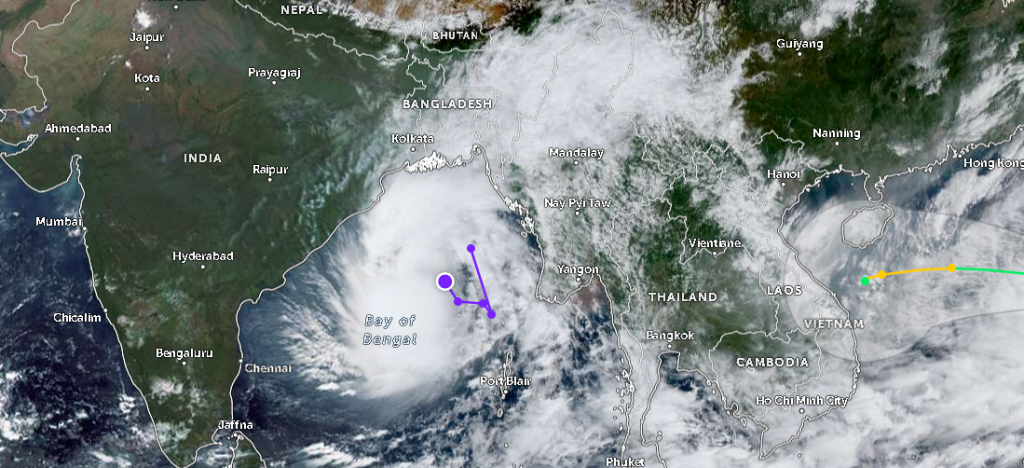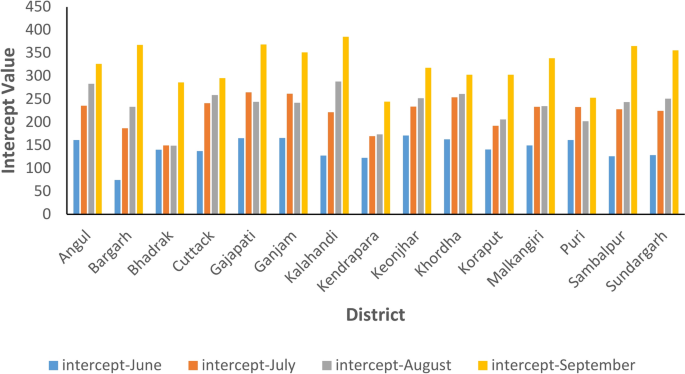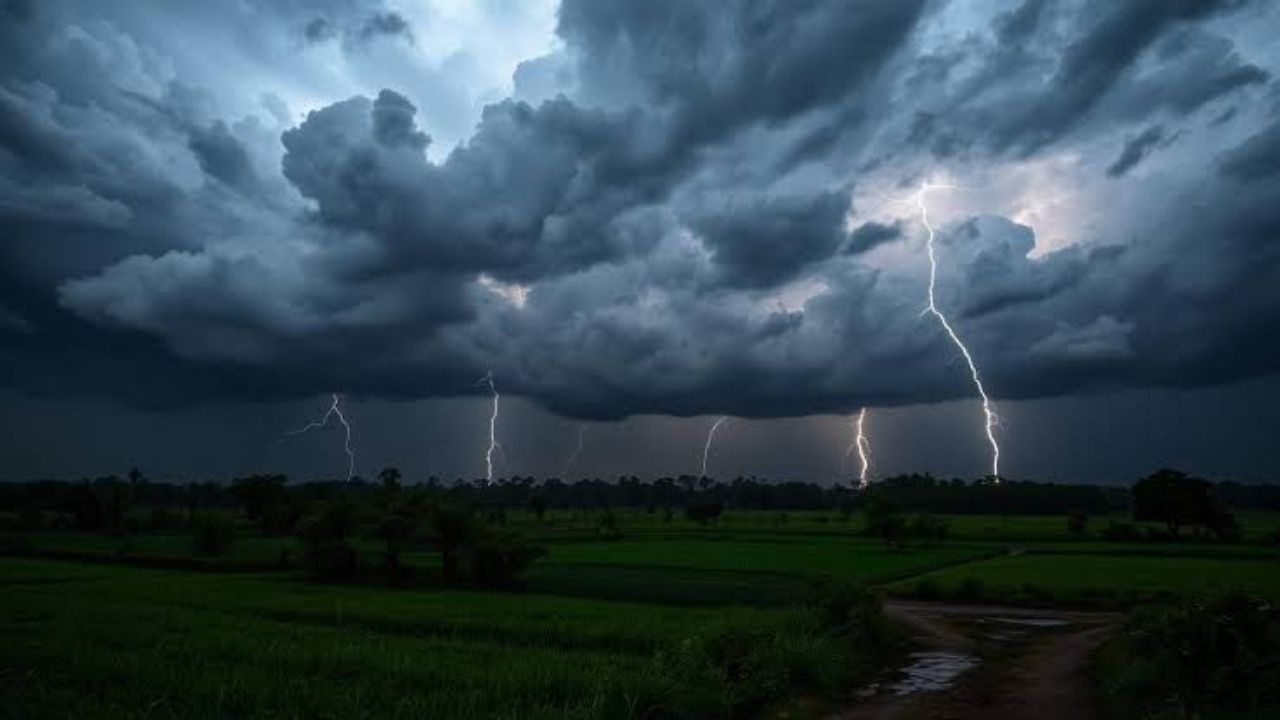BHUBANESWAR, India – The India Meteorological Department (IMD) has issued a forecast predicting continued rainfall across several districts of Odisha through September 8. The weather agency attributes the ongoing wet conditions to a cyclonic circulation situated over the northwest Bay of Bengal. Officials have issued yellow and orange warnings for various parts of the state, advising residents to remain cautious.

Weather Alert
| Key Information | Detail |
| Forecast Period | Rainfall expected to continue until Sunday, September 8, 2025. |
| Primary Cause | A cyclonic circulation over the northwest Bay of Bengal. IMD Bulletin |
| Areas Under Alert | Heavy rainfall warnings for coastal and interior districts. |
| Primary Risk | Waterlogging in low-lying areas and reduced visibility for traffic. |
Meteorological Conditions Driving the Rain
The current spell of Odisha rainfall is primarily influenced by an active weather system in the region. According to the latest bulletin from the IMD’s regional centre in Bhubaneswar, a cyclonic circulation is hovering over the northwest Bay of Bengal and its adjoining coastal areas.
“This system is drawing significant moisture from the sea, leading to the formation of rain-bearing clouds over the state,” said Dr. H.R. Biswas, Director of the Bhubaneswar Meteorological Centre. “We expect its influence to persist for the next 24 to 48 hours, resulting in light to moderate rain across most of the state, with isolated heavy downpours.”
This type of monsoon activity is characteristic of the late phase of the southwest monsoon season, which typically lasts from June to September. Such systems are crucial for agriculture but also pose risks if the rainfall is excessively intense over a short period.

District-Level Warnings and Potential Impacts
The IMD forecast includes specific warnings for districts expected to bear the brunt of the weather system. State authorities have amplified these alerts to ensure public preparedness.
Orange and Yellow Alerts Issued
An orange alert, signifying a need to “be prepared,” has been issued for isolated locations in districts such as Mayurbhanj, Balasore, and Bhadrak, where very heavy rainfall is considered likely. These areas could experience downpours exceeding 115 millimeters in a 24-hour period.
Simultaneously, a yellow alert, advising residents to “be updated,” is in effect for a wider range of districts. These include Kendrapada, Cuttack, Jagatsinghpur, Puri, Khurda, and several others in the state’s interior. These regions are expected to receive heavy rainfall, generally ranging from 65 to 115 millimeters.
The government of Odisha has advised fishermen not to venture into the sea off the coast due to squally weather conditions, with wind speeds potentially reaching 45-55 kilometers per hour.
Anticipated Consequences
Officials have warned of several potential consequences arising from the heavy rainfall. The primary concerns include:
- Urban Waterlogging: Low-lying areas in cities like Bhubaneswar and Cuttack may experience temporary waterlogging, leading to traffic congestion.
- Agricultural Impact: While the rain is largely beneficial for standing crops like paddy, excessive water in a short span could damage vegetables and other non-paddy crops.
- Reduced Visibility: Drivers have been advised to exercise caution due to poor visibility during intense rain spells.
The Office of the Special Relief Commissioner has communicated the IMD forecast to all district collectors, asking them to maintain a state of readiness and to take preemptive measures as required.

The Broader Context of Odisha’s Monsoon
This recent spell of rain comes during a monsoon season that has seen variable performance across Odisha. According to data from the IMD, the state has recorded slightly below-average rainfall for the season so far. This makes the current precipitation crucial for agricultural activities and for replenishing reservoirs, which are vital for both irrigation and drinking water supply.
However, the intensity of the rainfall remains a key factor. Climatologists note that the changing climate patterns are leading to more instances of intense, short-duration rainfall events rather than sustained, moderate rain spread over many days. Such events increase the risk of flash floods and soil erosion, even in a season with an overall rainfall deficit.
The state government remains on watch, with teams from the Odisha Disaster Rapid Action Force (ODRAF) positioned in vulnerable districts. Authorities have stated they are monitoring the situation closely and are prepared to respond to any emergencies that may arise from the inclement weather.
The forecast indicates a likely decrease in rainfall intensity from September 9 onwards as the cyclonic circulation is expected to weaken and move away from the Odisha coast.
Waterlogged Routes Bring Bhubaneswar to Standstill — Rain Worsens Commuter Woes
Low Pressure Weakens but Malkangiri Braces for a Day of Torrential Rain: Here’s What to Expect
Odisha’s Flood Nightmare Eases—But Here’s Why Authorities Aren’t Celebrating Yet
FAQs
1. What is a cyclonic circulation?
A cyclonic circulation is a large-scale system of winds rotating around a central area of low atmospheric pressure. In the Northern Hemisphere, these winds flow counterclockwise. They are common during the monsoon season and are a primary driver of widespread rainfall.
2. What does an IMD yellow alert signify?
A yellow alert from the IMD indicates the possibility of moderately bad weather. It is an advisory to “be updated” and aware of the situation, as it could potentially worsen and affect daily life.
3. When does the monsoon season officially end in Odisha?
The southwest monsoon season in Odisha typically begins in early June and starts withdrawing by the end of September or early October.





